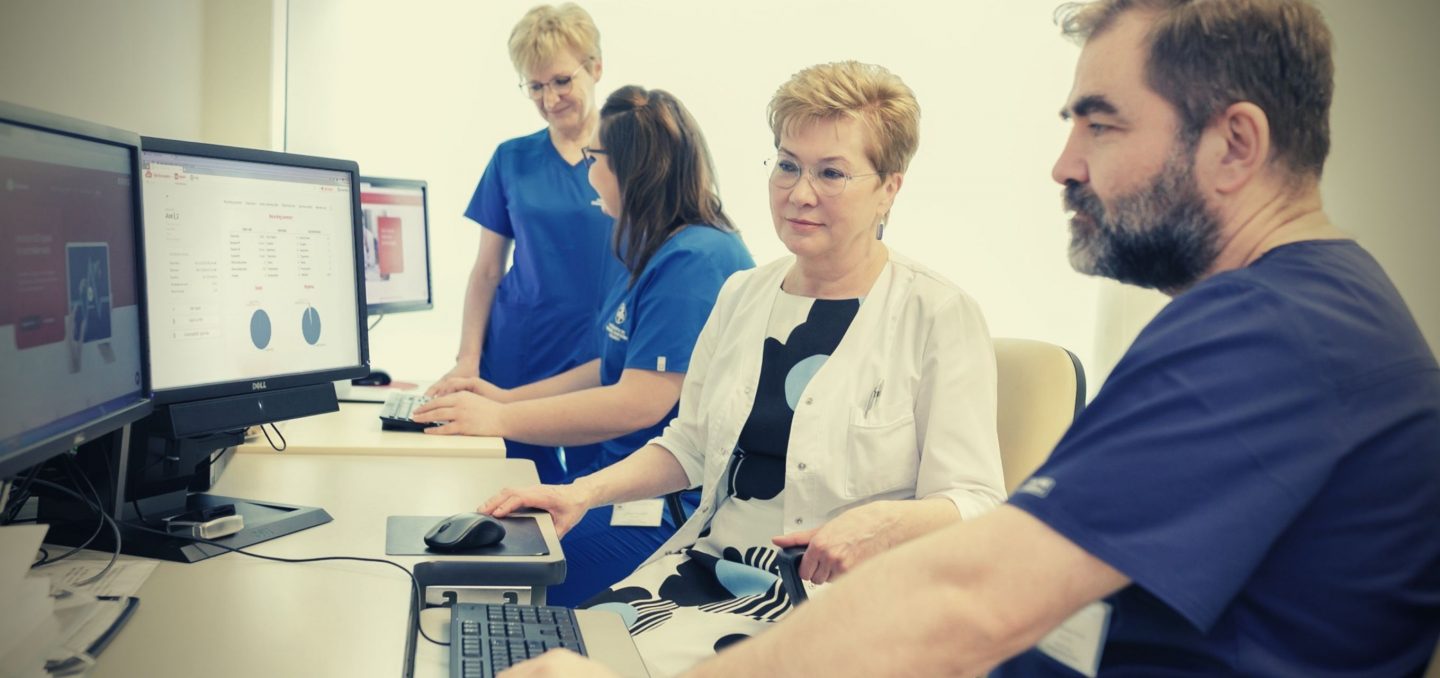Physicians are increasingly using software to automatically evaluate Holter ECG signals in adult patients, but so far, no software has been developed for children.
Cardiomatics and the Medical University of Warsaw are on the way to a breakthrough in paediatric cardiology. They are developing an internationally innovative tool for automatic assessment, analysis, and interpretation of electrocardiographic signals (ECG) from pediatric patients. Project co-financed by the European Union through the European Regional Development Fund under the Smart Growth Operational Programme.
The Cardiomatics Junior Project is a direct response to the identified lack of ECG diagnostic solutions dedicated to children. There are several tools for automatic ECG signal analysis in adults, but these solutions may not be applicable for the ECG analyses in paediatric population neither in children with normal sinus rhythm nor with various kinds of heart rhythm disturbances. This is the result of age dependent distinct features of the circulatory system such as: a strong correlation between morphology, signal amplitude, and age as well as relevant respiratory sinus arrhythmia or sinus tachycardia.
“The use of adult ECG analysis tools in a child may lead to incorrect interpretation of the automatic recording. Such incorrect automatic signal analysis means that it must be performed entirely manually by a human, which is a tedious and time-consuming process. For this reason, the risk of making a mistake, and in particular missing important electrocardiographic events, is greater than in the case of automatic analysis and may lead to a failure to recognize significant arrhythmias and cardiac conduction disorders, and thus failure to undertake pharmacological or interventional treatment in time” – underlines Prof. Bożena Werner, PhD., MD, Head of the Department of Pediatric Cardiology and General Pediatrics, DSK UCK, Medical University of Warsaw.
A digital ECG analysis technology developer, Cardiomatics, and the Medical University of Warsaw team have taken the challenge of developing an internationally innovative tool for automatic assessment, analysis, and interpretation of electrocardiographic signals (ECG) from paediatric patients – Cardiomatics Junior.
This innovative product will allow cardiac arrhythmias in children to be assessed more effectively and minimize the time needed for cardiologists to evaluate data received from the Holter monitor due to the use of Cardiomatics’ algorithms, which are based on artificial intelligence.
The key challenge will be to build algorithms that will enable high-quality ECG signal analysis in children. The algorithms will be built using deep neural network architectures, such as ResNet, and will operate on filtered ECG signals. At the same time, the basic method to “train” the algorithm will be to use a database of signals from paediatric patients, which will be created in cooperation with researchers from MUW.
“The creation of a reliable Cardiomatics’ system for automatic analysis of ECG recordings using the Holter method in children will not only improve the work of clinicians but also increase the availability and universality of this test, which is of great importance in the detection of rhythm and conduction disorders in paediatrics. Cardiomatics technology will also improve the recognition of these diseases, thanks to which it will be possible to undertake adequate therapy at an earlier stage. In some situations, it could even help to avoid life-threatening arrhythmic events, such as ventricular tachycardia or sudden cardiac arrest e.g., in such conditions as channelopathies” – says Dr. Radosław Pietrzak.
The pioneering tool for quick and effective cardiological diagnostics of children will be helpful both in paediatric cardiology and general paediatrics or even in sport medicine.
R&D works will take another 3 years and consume a budget of 5 363 925 PLN. The implementation of the project is possible thanks to the support of the National Center for Research and Development.



